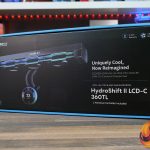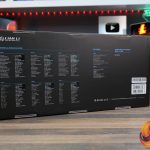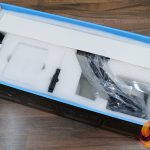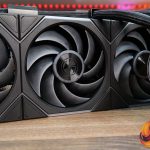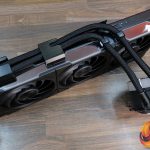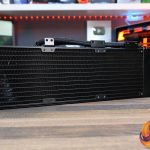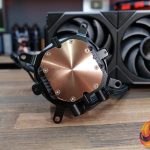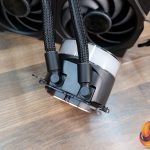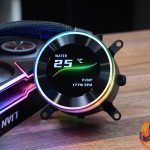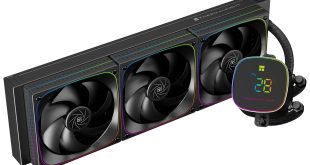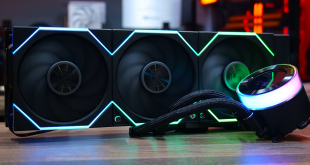
The original Lian Li HydroShift AIO is currently sat at the top of our performance charts, but now the company is launching the HydroShift II LCD-C with a new smaller dimension radiator only 22 mm thick. It comes with a choice of two different fan configurations or a completely fanless version so users can add their own fans. But does this new smaller dimension HydroShift AIO still offer the same chart topping performance as its predecessor? Let’s find out.
Timestamps:
00:00 Intro
00:48 Meet the HydroShift II
01:51 New features, specs and compatibility
02:35 Differences vs the original
04:25 Radiator + tubing details
06:32 Closer look at the CPU Block + screen
08:41 Wireless fans explained
10:56 Installation process
13:15 James’ thoughts so far
15:42 Thermal and noise results
17:34 James’ closing thoughts
Features:
- Compared to its predecessor, the HydroShift II LCD-C features a reduced-size radiator to increase case compatibility, as well as a sliding tube clamp for precise alignment.
- It's equipped with a 2.1-inch circular IPS LCD screen with 480×480 resolution, 60Hz refresh rate and 500 nits brightness. With three modes of control, including offline, USB and wireless.
- It also features an improved CPU block mounting mechanism, a choice of two different fan configurations or even a completely fanless version and they all come with a 6-year warranty for peace of mind.
Specifications:
- CPU Socket Compatibility: Intel LGA1700, LGA1851, AMD AM4, AM5
- Radiator Material: Aluminium
- Radiator Dimensions: 400 x 122 x 22mm
- Radiator Tube Length: 450mm
- CPU Block/Pump Dimensions: 88 x 88 x 69mm
- Pump Speed: 2000-2400 RPM
- Cold Plate Material: Micro-Skived Copper
- Pump Connector: N/A
- VRM Fan: N/A
- Fan Dimensions: 120 x 120 x 28mm
- Fan Speed (PWM): 200-2600 RPM (Zero RPM mode)
- Fan Max Airflow: 71 CFM
- Fan Max Air Pressure: 3.97 mmH2O
- Noise (dBA): 33 dBA
- Fan Bearing: Fluid Dynamic bearing
- Fan Connector: Wireless / 4-Pin Power, USB Header
- LCD Screen: 2.1” IPS 480×480
- Warranty: 6-Year
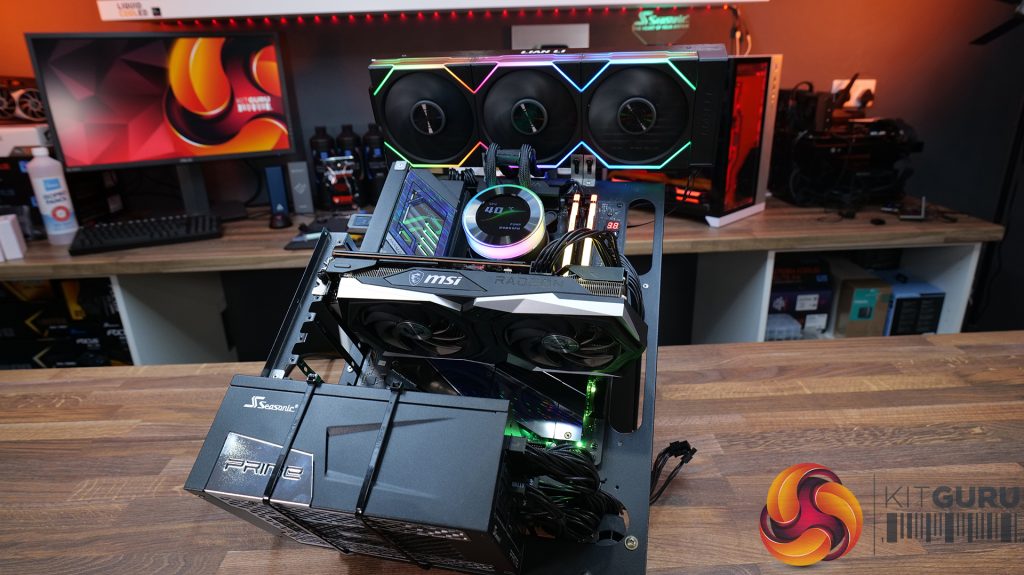
Test System Specifications:
- CPU: AMD Ryzen 9 9950X
- Motherboard: ASRock Phantom Gaming X870E Nova WiFi
- Memory: 32GB (2 x 16GB Modules) Kingston Fury DDR5-6000
- Graphics card: MSI Radeon RX 6600 XT Gaming X
- Storage: 1TB Corsair MP600 Elite PCIe Gen4x4 NVME M.2 SSD
- Power Supply: Seasonic Prime TX-1600
- Chassis: Open Test Bench
- Thermal Compound: Arctic MX-6
- O/S: Windows 11 Version 24H2
Testing Methodology:
We are primarily focussing on the performance of each cooler at 100% fan speed and also when locked to 40dBA noise output. We will focus on cooling performance using a manual overclock with all-core frequency and VCORE locked to 5.2GHz/1.3v (AMD) and 5.5GHz/1.3v (Intel) and Precision Boost Overdrive performance.
- The test data is logged using HWINFO and the final 10 minutes of the data is calculated to find the average CPU temperature and CPU clock multiplier (AMD PBO Test) and then plotted in the charts.
- For testing, we use a 30-minute looped run of Cinebench R23 and record the steady-state CPU temperature at the end of the test. This ensures that the CPU has had ample time to warm up and reach a steady state under all of the coolers.
- The ambient is maintained at 19-21 degrees Celsius. Where there is variation beyond this temperature range, we add extra repeated tests to ensure consistency. However, this is well controlled now with A/C.
- We also test each cooler with at least two fresh installs (typically three) to mitigate the likelihood of poor mounting spoiling results.
- Ambient temperature and humidity are controlled via a mini split air conditioning system inside the test room. Ambient temperature is maintained between 19-20C, Temperature delta figures are shown in the charts (ambient temperature is deducted from the measured component temperature).
Test Results:
Acoustics
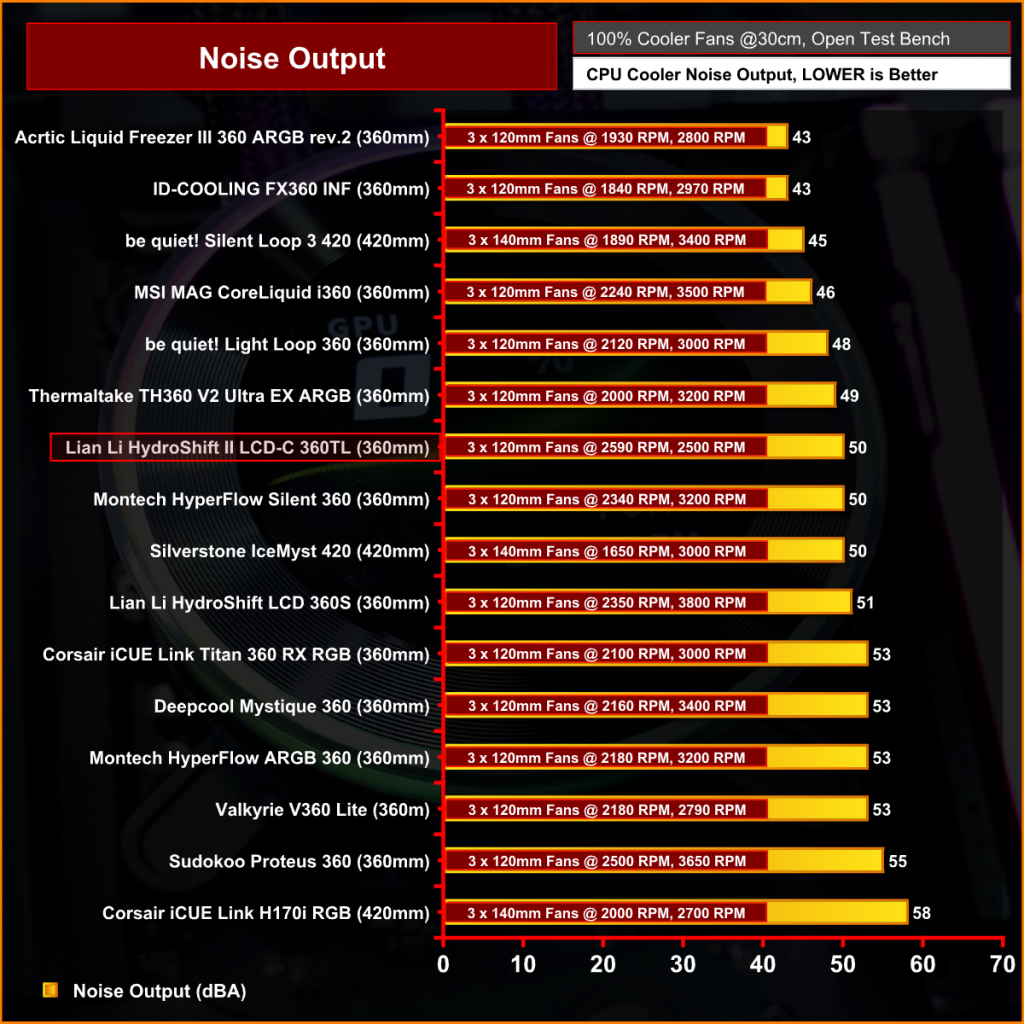
We’ll start by looking at noise output as this will give us a better understanding of thermal performance based on the noise.
The Lian Li HydroShift II LCD is by no means a quiet cooler at 100% fan speed with a maximum noise output of 50dBA, however at almost 2600 rpm the maximum fan speed is very high and compared with other fans at similar speed the noise output of the Lian Li TL fans is quiet in comparison.
Thermal Performance: AMD Ryzen 9 9950X
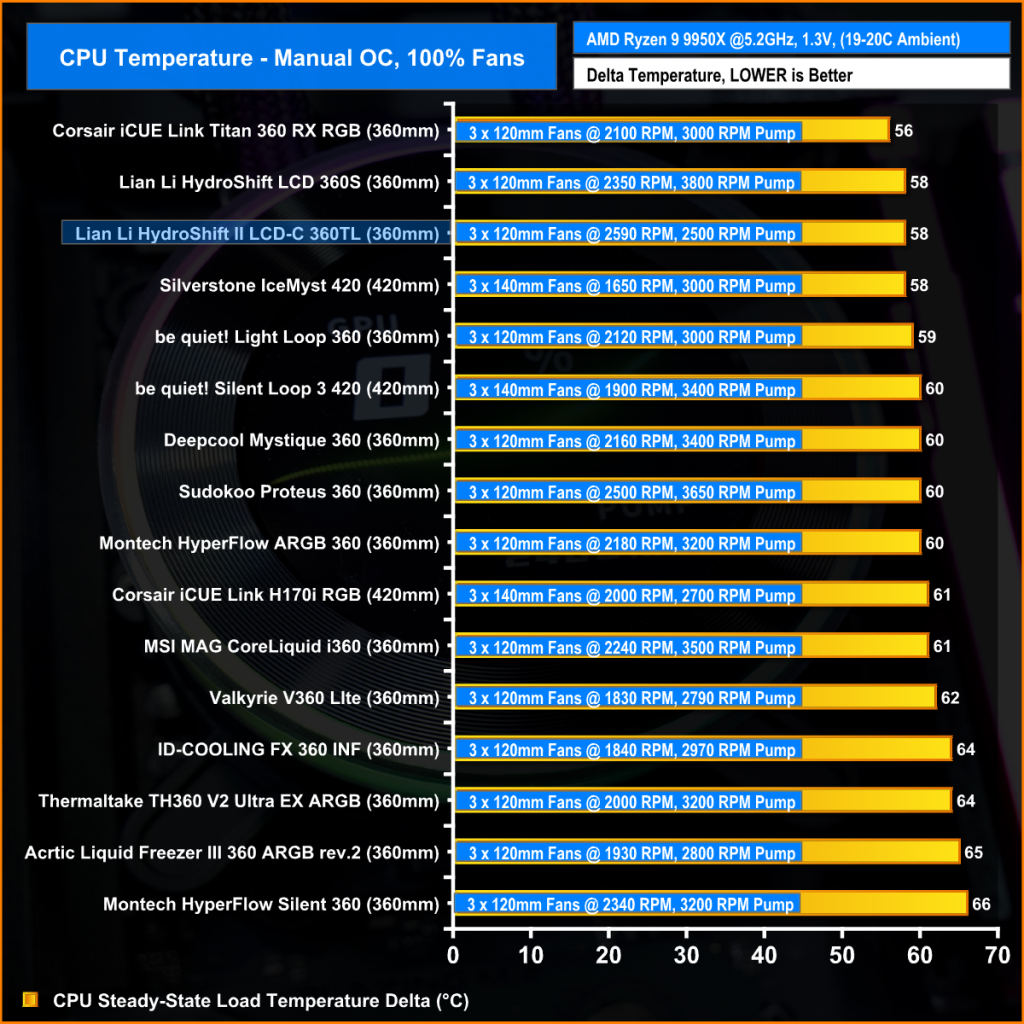
With the fans at max speed the HydroShift II LCD is trading blows with some of the top coolers we have tested so far on the 9950X. Even though it has a slimmer radiator, it still performs on par with its predecessor and is level pegging with the top-ranking 420mm AIO at 58°C over ambient average CPU temperature.
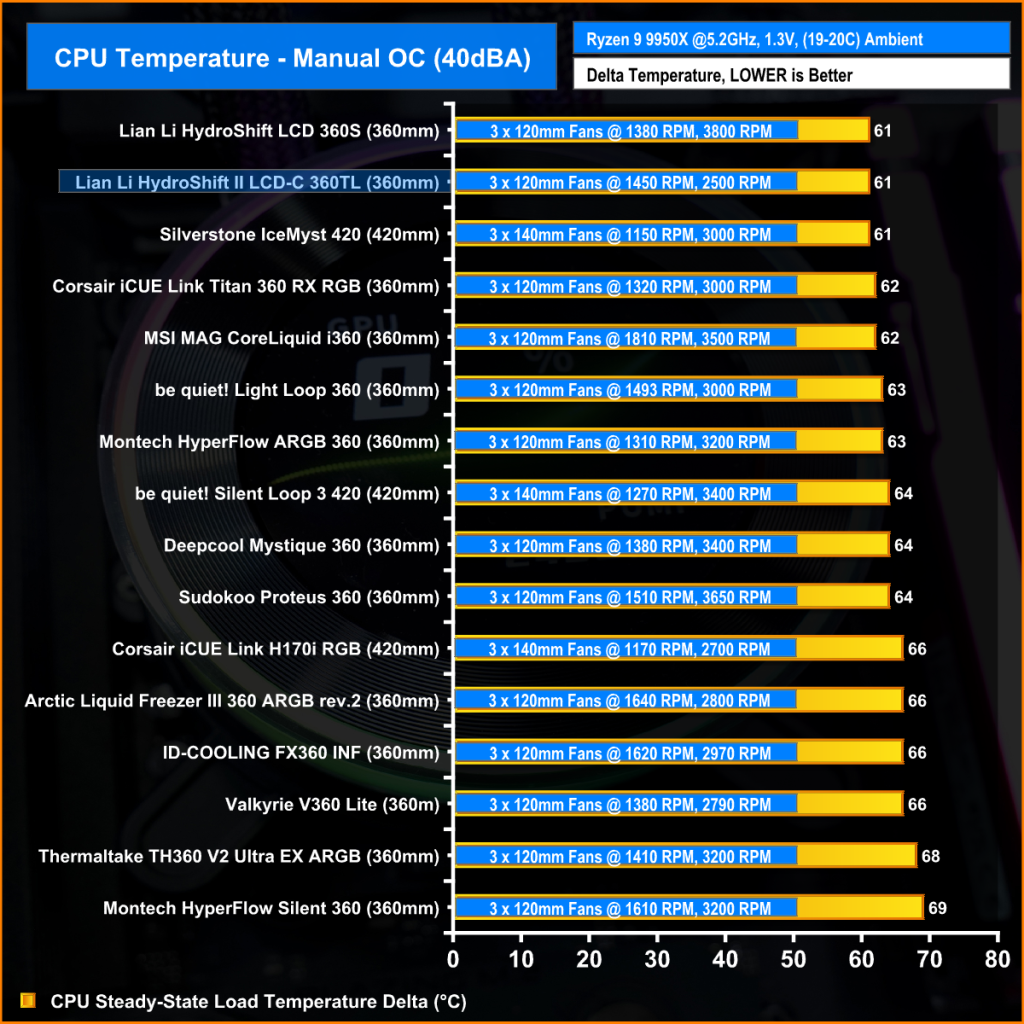
For the HydroShift II LCD to hit the 40dBA noise normalised target we had to reduce fan speed down to 1450 rpm but the cooler still hangs on with solid thermal performance at 61°C over ambient, which again equals the original HydroShift performance and is again on par with the 420mm Silverstone ICEMYST which is remarkable considering its giving up some cooling surface area against both these coolers.
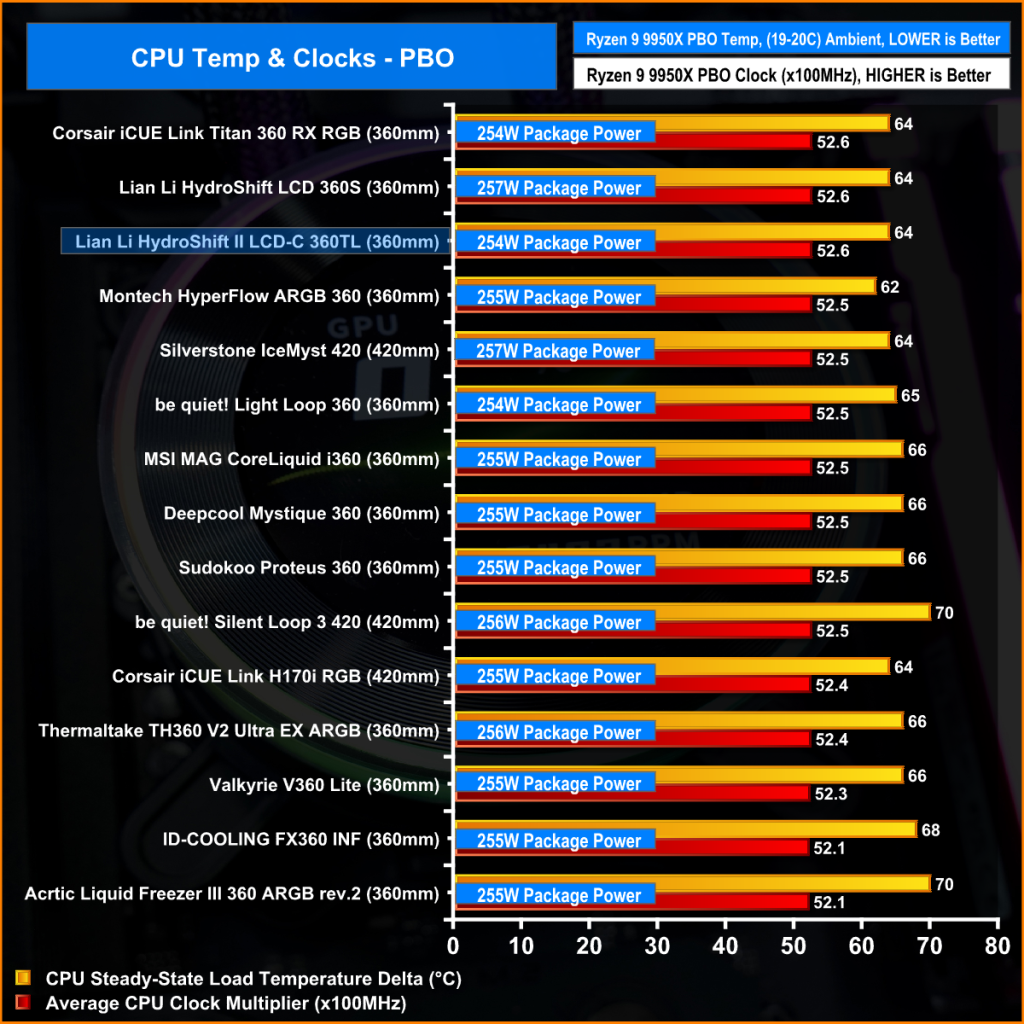
The important metric in the PBO test is clock speed as the CPU automatically adjusts frequency based on temperature so the temperature delta between coolers is very close.
In this scenario the Lian Li HydroShift II LCD-C is again at the top end of our chart with an average clock multiplier of 52.6x while cooling over 250W package power. It matches the performance of its predecessor and outperforms the 420mm Silverstone unit. So even though the radiator dimensions have been slimmed down, there's no reduction in performance, which is very impressive.
As soon as you take the Lian Li HydroShift II LCD-C cooler out of the box, you know this is a quality product. Lian Li has this knack of nailing the build quality almost every time with its products, and the company's experience of building premium products shows once again with the HydroShift II. Not only does it look great, but it also has features that other companies have simply not thought of yet, like wireless connectivity and hidden tubing. It's not like tubing looks bad on other models, once installed it just doesn’t look as neat as HydroShift.
Lian Li also improved the mounting mechanism of the CPU block and added some useful adjustments of the tubing to make it align perfectly in almost any scenario. These design additions, the wireless connectivity and a slimmer radiator mean that when the cooler is installed into the system, it has a super clean look with minimal tubing on display and no cables at all around the CPU block. Lian Li has even gone as far as putting a cover over the CPU block bracket and thumbscrews to make it even cleaner looking.
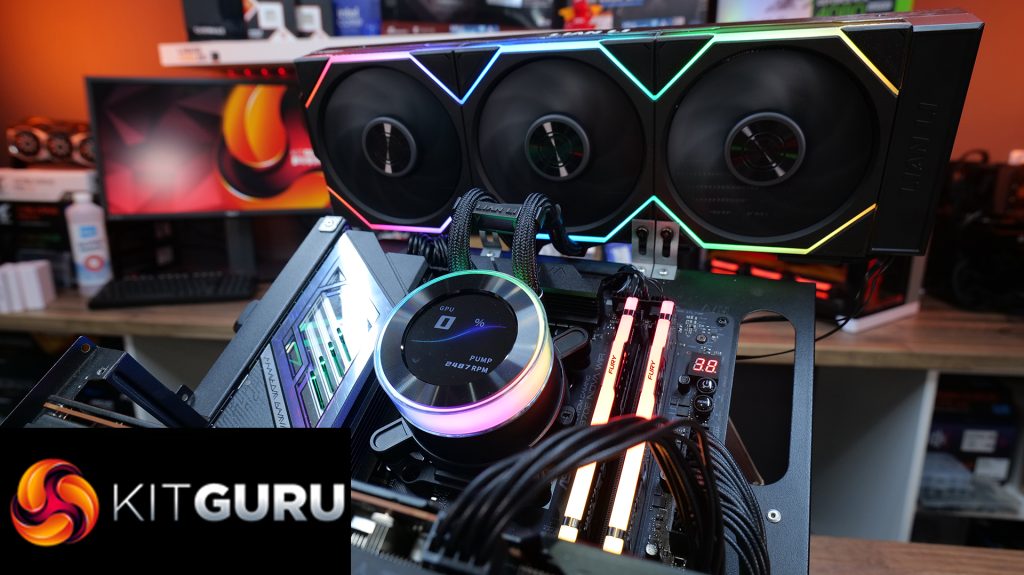
Users have the choice of several connection options, with either manual or software control. In offline mode, the LCD screen and RGB can be controlled manually by rotating the CPU block top clockwise or anticlockwise to scroll through the preset configurations. Alternatively, the user can control customisation via the Lian Li L-Connect 3 software which instantly connects to the cooler in wired USB or wireless modes. Either way it’s easy to install and use, even if the user manual can be a little confusing at times.
In terms of negatives, there aren’t many. The $240 MSRP may be seen as expensive for some, but there are no other coolers with this level of unique features, top-notch build quality and chart-topping thermal performance. Some may find it a little loud at max fan speed too, but lowering the fan speed doesn't nerf thermal performance, so it can be configured to your specific noise output needs. As a whole package with looks, ease of installation, build quality and performance taken into consideration, this is one of the best AIO CPU coolers you can buy currently.
Pros:
- Class-leading thermal performance at max fan speed and with noise normalised.
- Great build quality.
- Easy installation.
- Very clean looks with the hidden tubing and no CPU block cables.
- Compact radiator dimensions offer greater case compatibility.
Cons:
- Expensive.
- The user manual can be a little confusing.
KitGuru says: It may sound a little expensive to some at $240 MSRP. But it has everything, great build quality, easy installation and configuration, class-leading thermal performance and some very unique and useful features that make it the best AIO for users who want great looks and the thermal performance to match.
 KitGuru KitGuru.net – Tech News | Hardware News | Hardware Reviews | IOS | Mobile | Gaming | Graphics Cards
KitGuru KitGuru.net – Tech News | Hardware News | Hardware Reviews | IOS | Mobile | Gaming | Graphics Cards


